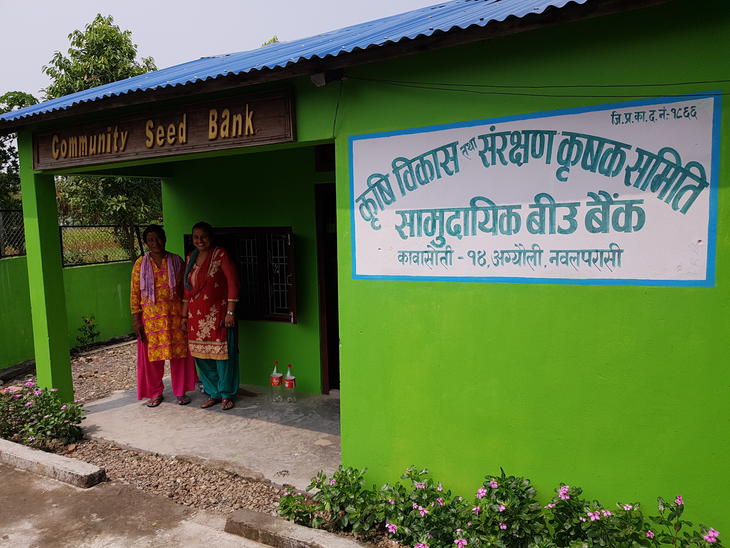
Option 6A
Establish and/or support community seed banks, seed clubs, seed houses, seed-saver networks or similar approaches.
Community seed banks, seed houses, seed clubs, seed-saver networks or similar approaches may serve, inter alia, to provide farmers with good quality seed of a range of locally adapted crops and varieties, which may otherwise not be easily accessible. Women and men may have different preferences and needs regarding crops and varieties they wish to grow. Such differences may need to be carefully considered and addressed to ensure that community members can equally participate in and benefit from this type of approaches.
Activities are usually based on local governance structures and collectively agreed rules. They may be conducted by informal groups or legal entities, such as associations, co-operatives or community-based organizations; several local initiatives may cooperate via networks or umbrella organizations. Seed is produced by the members of such organizations and may be selected, processed and stored centrally or in a decentralised manner. Distribution may be limited to members or also be extended to external users.
The focus may be on the conservation and/or re-introduction of local varieties, e.g. via cooperation with national genebanks and research institutes, and/or on the dissemination of new varieties developed by public and/or participatory plant breeding programs.
Example(s) of possible measures:
- Ejere Farmer Crop Conservation Association (FCAS) and Community Seed Bank (Ethiopia/Africa). Click here
- Access to seed through a network of community seed banks in la Sierra de los Cuchumatanes (Guatemala/Latin America and the Caribbean). Click here
- 1000 seed self-reliant villages (Indonesia/Asia). Click here
- Norwegian Seed Savers (KVANN) (Norway/Europe). Click here
- Securing local seed systems through Farmers’ Seed Clubs (Vietnam/Asia). Click here